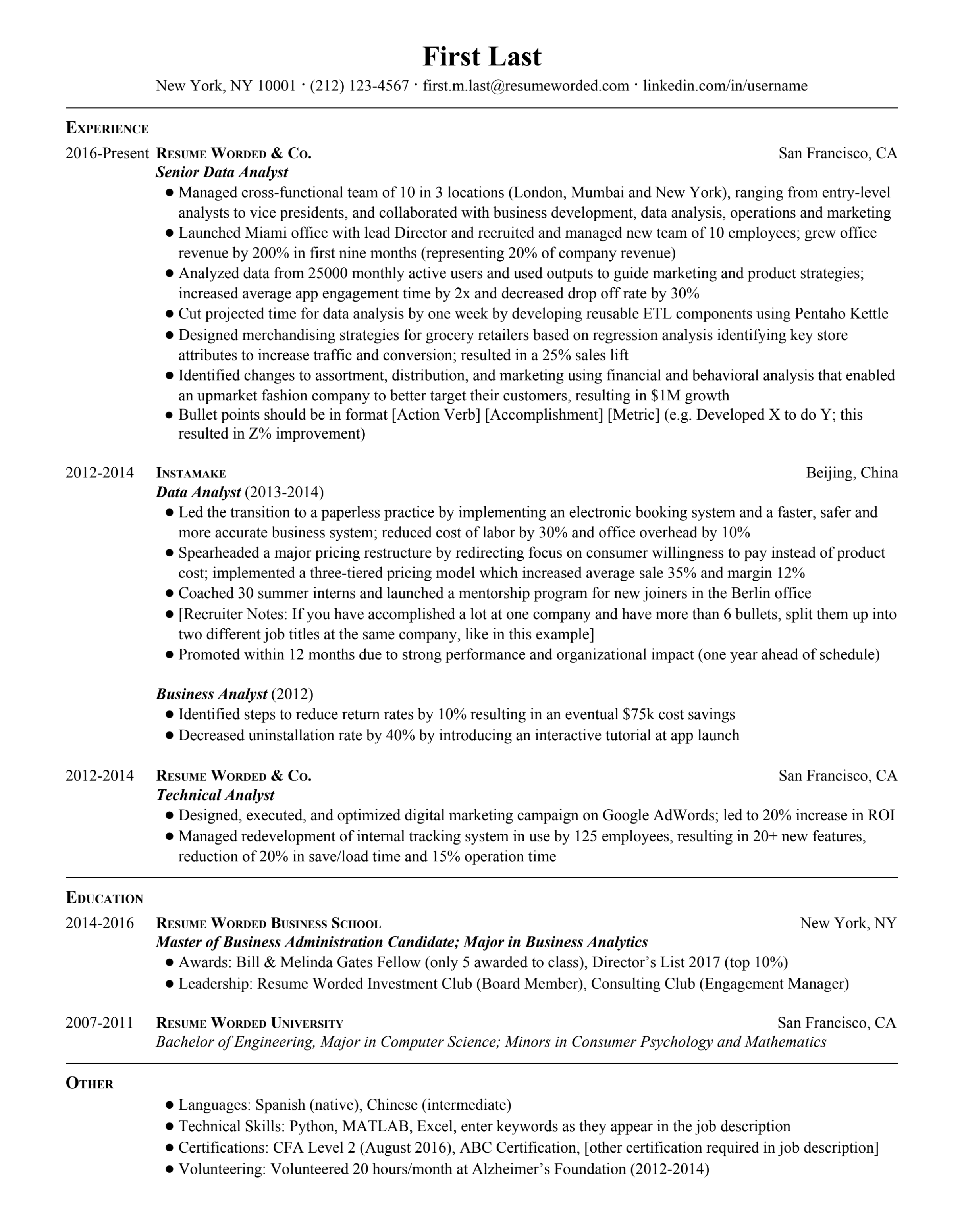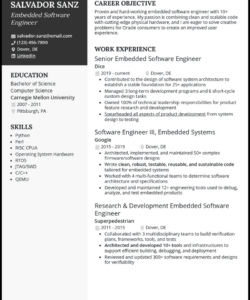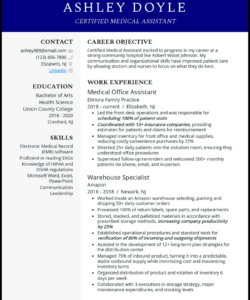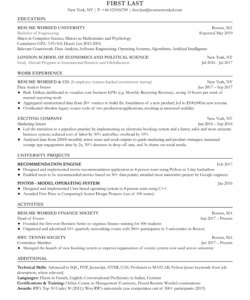So, you are eyeing that exciting senior data analyst role, ready to dive deeper into complex datasets and drive strategic decisions. That is fantastic! But before you can impress in an interview, you first need to grab the attention of hiring managers and recruiters. Your resume is your first, and often only, chance to make a lasting impression. It needs to tell your unique story, showcase your advanced analytical prowess, and highlight your leadership capabilities in a concise yet impactful way.
Crafting such a document from scratch can feel daunting, especially when you are balancing your current responsibilities. This is where a well-structured senior data analyst resume template becomes your best friend. It provides a foundational framework, ensuring you include all the essential elements while giving you the freedom to personalize it with your specific achievements and career trajectory. Think of it as a meticulously designed blueprint for your professional narrative, guiding you to present your best self.
Crafting Your Senior Data Analyst Resume: Essential Sections
Building a compelling resume for a senior data analyst position involves more than just listing your past jobs. It is about strategically showcasing your expertise, leadership, and the tangible impact you have made. Each section plays a crucial role in painting a complete picture of your capabilities. A good senior data analyst resume template will guide you in populating these sections effectively.

Highlighting Your Professional Experience
This is arguably the most critical section. For each role, do not just describe your duties; instead, focus on your accomplishments. Use the STAR method (Situation, Task, Action, Result) to frame your contributions. Did you implement a new data model? Quantify the improvement it led to, whether it was a percentage increase in efficiency, a reduction in costs, or a boost in revenue. Did you lead a team or mentor junior analysts? Emphasize those leadership aspects. Senior roles demand proof of impact and leadership, so ensure your bullet points reflect this by starting with strong action verbs.
For example, instead of saying “Responsible for data analysis,” try “Spearheaded the development of a predictive analytics model that increased sales forecasting accuracy by 15%, leading to optimized inventory management and a 5% reduction in carrying costs.” This level of detail and quantification is what hiring managers are looking for. They want to see how your skills translated into tangible business value.
Showcasing Your Technical and Soft Skills
Your skills section should be a concise yet comprehensive list of your technical prowess and essential soft skills. For senior data analysts, this goes beyond basic SQL and Excel. Think about advanced programming languages like Python and R, specialized tools for data visualization like Tableau or Power BI, big data technologies like Hadoop or Spark, and cloud platforms such as AWS, Azure, or GCP. Do not forget machine learning frameworks and statistical modeling techniques.
Equally important are your soft skills. As a senior analyst, you are expected to communicate complex findings to non-technical stakeholders, mentor junior team members, and lead projects. Therefore, include skills like:
* Problem-solving
* Critical thinking
* Communication (written and verbal)
* Collaboration
* Project management
* Mentorship
* Strategic thinking
These skills demonstrate your readiness for leadership and your ability to integrate into and lead cross-functional teams.
Optimizing Your Senior Data Analyst Resume for Success
Once you have filled out the core sections, the next step is to optimize your senior data analyst resume for maximum impact. This involves several key strategies, from tailoring your content to ensuring it passes through automated screening systems. Just having a polished senior data analyst resume template is a great start, but the personalization and fine-tuning are what truly make it shine.
Firstly, always tailor your resume to each job application. While the core experience remains, carefully review the job description for keywords and phrases. Incorporate these naturally into your summary, experience bullet points, and skills section. Applicant Tracking Systems (ATS) scan resumes for these keywords, and if your resume does not contain enough of them, it might never reach a human recruiter. Think of it as speaking the same language as the job posting.
Secondly, quantify everything possible. We touched on this in the experience section, but it bears repeating. Numbers speak volumes. Whether it is the size of the datasets you worked with, the percentage improvement you achieved, the number of reports you generated, or the budget of the projects you managed, quantify your impact. This provides concrete evidence of your capabilities and helps hiring managers understand the scale of your contributions.
Finally, proofread meticulously. A single typo or grammatical error can undermine your professionalism and attention to detail, which are crucial traits for a data analyst. Have a trusted friend or colleague review it, or use online grammar checkers. Beyond grammar, ensure consistent formatting throughout the document. A clean, easy-to-read layout makes a significant difference. Consider including a professional summary or objective statement at the top that acts as an elevator pitch, immediately conveying your value proposition as a senior data analyst.
Your resume is a living document, a powerful marketing tool that evolves with your career. By meticulously crafting each section, highlighting your quantifiable achievements, and optimizing it for both human eyes and ATS, you significantly increase your chances of landing that coveted senior data analyst role. It is an investment in your future, paving the way for exciting new challenges and opportunities in the dynamic world of data. Ensure every word contributes to building a compelling narrative of your expertise and potential.


